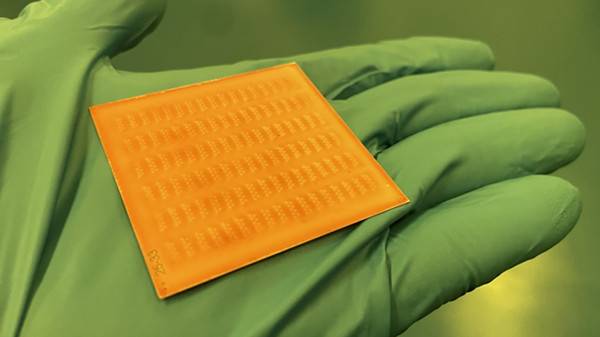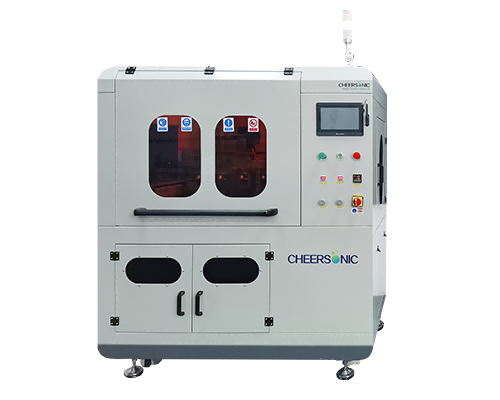Understanding Photoresist in One Article
Understanding Photoresist in One Article – Photoresist Coating – Cheersonic
In semiconductor manufacturing processes, since complex microstructures often need to be prepared, the requirements for each photolithography may be very different. Sometimes positive photoresist is needed to improve resolution, sometimes negative photoresist is needed for lift-off, and sometimes thick photoresist is needed for deep trench etching. So how do they meet these requirements? What are the commonly used photoresists and what are their principles?
Positive photoresist
Positive photoresist composition: Usually positive photoresist is mainly composed of photosensitizer, resin and solvent. There are many photoresist systems on the market. Let’s take the conventional DQN two-component system positive photoresist as an example to understand it. It mainly consists of three parts: phenolic resin (Novolac), photosensitizer diazoquinone (DQ), and xylene (solvent).
Exposure principle: The DQ system uses the Wolff rearrangement reaction, in which the α-diazoquinone in DQ releases nitrogen and quinone free radicals under light, and then undergoes a 1,2-rearrangement reaction to generate quinone ketone. Then, under the action of water, the ketone group is further converted into a carboxyl group, which can react with the alkaline developer to accelerate dissolution. Finally, the exposed area develops quickly, achieving positive photoresist patterning.
Negative photoresist
Negative photoresist composition: Negative photoresist is mainly composed of polymer monomers, photosensitizers and solvents. Photosensitizers can usually generate free radicals to trigger monomer polymerization to form a three-dimensional molecular network, turning soluble into insoluble, thereby achieving pattern transfer. Taking SU-8 photoresist as an example, the main components are: SU-8 monomers, triarylsulfonate photosensitizers, and solvent PGMEA.
Exposure principle: First, under the action of ultraviolet light, triarylsulfonium salt decomposes to produce fluoroantimonic acid and triarylsulfonium hexafluoroantimony. Then fluoroantimonic acid causes the epoxy group in the SU-8 monomer to open and reconstruct, so that the epoxy group lacks an electron on the adjacent carbon. Finally, after the structure is activated, it polymerizes with the epoxy groups in other monomer molecules to achieve the connection of molecular chains, making the glue insoluble and the colloid solidified.
Comparison of positive and negative photoresists
How to choose positive and negative photoresists is the most important part of semiconductor technology. Table 1 compares the performance of positive and negative photoresists. Generally speaking, for devices requiring high resolution and precise structure, positive photoresists are usually used, which have simple processes, low costs and can provide good pattern resolution. By selecting appropriate exposure agents, developers and subsequent processing steps, precise control of positive photoresists can be achieved, thereby realizing complex device structures.
Negative photoresists have good chemical resistance, thermal stability, and etching resistance due to their highly cross-linked molecules. They are usually suitable for manufacturing some microstructures or complex three-dimensional shapes, such as microfluidic chips, micro pipes, micro blocking valves and other microfluidic devices.
Ultrasonic spraying systems have been proven to be used in various applications that require uniform and repeatable photoresist or polyimide film coatings. The thickness control range is from submicron to more than 100 microns, and any shape or size can be coated.
Ultrasonic spraying technology is used for semiconductor photoresist coating. Compared with traditional coating processes such as spin coating and dip coating, it has the advantages of high uniformity, good encapsulation of microstructures, and controllable coating area. In the past 10 years, it has been fully demonstrated that the 3D microstructure surface photoresist coating using ultrasonic spraying technology, the prepared photoresist coating is significantly higher than the traditional spin coating in terms of microstructure wrapping and uniformity Craft.
The ultrasonic spraying system can precisely control the flow rate, coating speed and deposition volume. Low-speed spray shaping defines atomized spray as a precise and controllable pattern to avoid excessive spray when producing a very thin and uniform layer. The ultrasonic spray system can control the thickness from sub-micron to more than 100 microns, and can coat any shape or size.
About Cheersonic
Cheersonic is the leading developer and manufacturer of ultrasonic coating systems for applying precise, thin film coatings to protect, strengthen or smooth surfaces on parts and components for the microelectronics/electronics, alternative energy, medical and industrial markets, including specialized glass applications in construction and automotive.
Our coating solutions are environmentally-friendly, efficient and highly reliable, and enable dramatic reductions in overspray, savings in raw material, water and energy usage and provide improved process repeatability, transfer efficiency, high uniformity and reduced emissions.
Chinese Website: Cheersonic Provides Professional Coating Solutions



